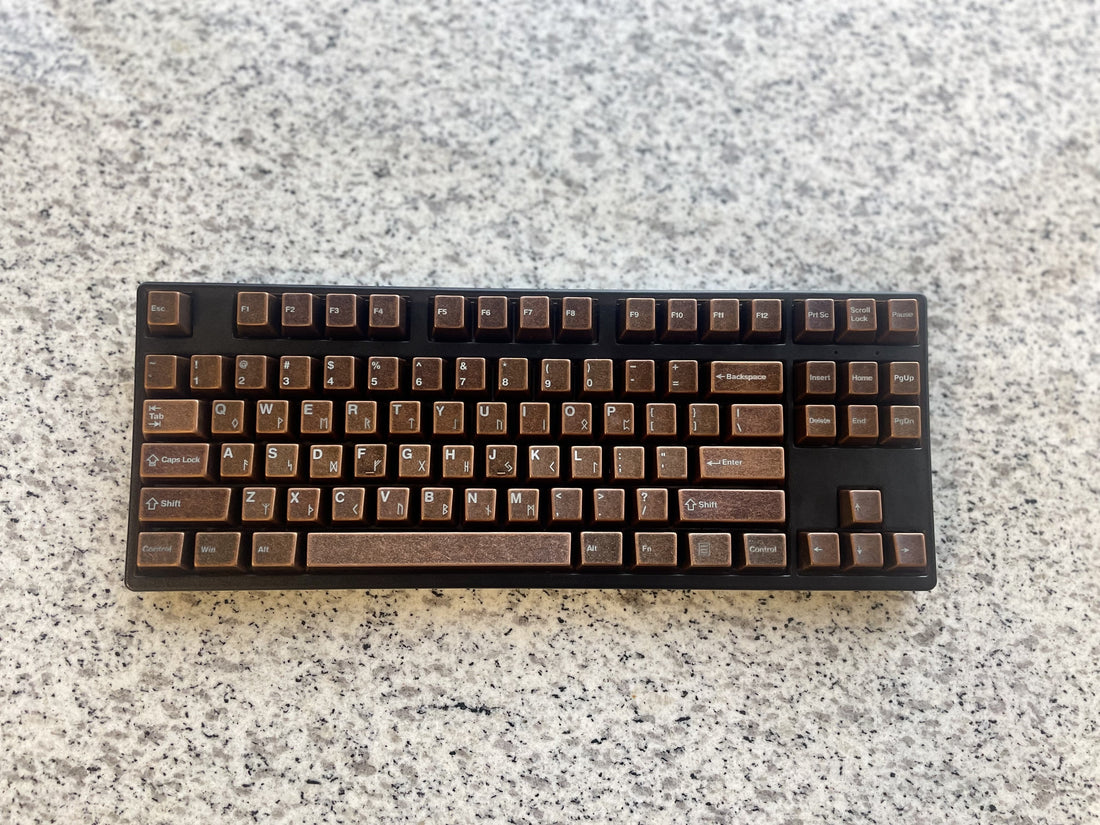For mechanical keyboard enthusiasts, sound isn’t just a byproduct — it’s part of the experience. From the high-pitched clack of thin ABS to the deep thock of heavy metal keycaps, the way your keyboard sounds can transform how satisfying it feels. But what exactly shapes this acoustic personality?
In this article, we’ll break down how materials, profiles, and thickness affect sound — and why premium sets like Awekeys’ full-metal keycaps are changing the game.
1. Keycap Materials: The Foundation of Sound
The material is the single biggest factor in how a keyboard “speaks.”
ABS (Acrylonitrile Butadiene Styrene)
Lightweight, smooth, and affordable
Produces a higher-pitched clack
Downsides: prone to shine and wears quickly
PBT (Polybutylene Terephthalate)
Denser and more durable than ABS
Offers a deeper, more muted thock
Matte texture resists shine
Metal (Aluminum, Copper, Alloys)
Significantly heavier and denser
Creates a deep, resonant thock with every press
Long-lasting, premium, and visually striking
🎵 According to enthusiasts on Reddit, thicker and denser keycaps noticeably lower pitch and add warmth to sound.
2. Profile & Shape: How Form Changes Acoustics
Even with the same material, profile (the shape and height of keycaps) changes how sound waves bounce inside your keyboard.
Cherry Profile – Lower height, closer to the switch → tighter, quieter sound
OEM Profile – Standard height with a slight curve → balanced acoustics
SA Profile – Tall and sculpted → amplifies resonance, produces louder clack
DSA Profile – Flat, uniform → consistent sound across rows
💡 As The Kapco explains, profile and thickness can change pitch as much as material itself.
3. Keycap Thickness: The Unsung Hero
Thin ABS keycaps → sharp, plastic-like sound
Thick PBT or doubleshot caps → warmer, bass-heavy sound
Full-metal keycaps → weighty, echo-dampened thock that feels premium
As Glacier PC Gaming notes, thicker walls improve not only sound but also durability.
4. Other Factors That Influence Sound
While keycaps matter most, your overall setup adds extra flavor:
Switch type (linear vs tactile vs clicky)
Keyboard case material (plastic vs aluminum vs gasket-mounted)
Desk surface (wood absorbs, glass amplifies)
Foam dampening & lubing mods
In short, keycaps set the tone — but the whole system plays the symphony.
5. Why Awekeys Metal Keycaps Stand Out
If you want sound and feel unlike anything else, metal keycaps are the upgrade you didn’t know you needed.
✅ Premium metals like aluminum & copper deliver deep, resonant acoustics
✅ Pairs with profiles like Cherry and SA for customized sound signatures
✅ Ultra-durable — no shine, no wear, built to last decades
✅ Design themes like Copper Eagle and Viking Series let your desk look as good as it sounds
👉 Explore the Copper Eagle Set — the ultimate luxury upgrade for your keyboard’s sound and style.
Conclusion
The sound of your keyboard isn’t an accident — it’s crafted through material, profile, and design choices. While ABS and PBT dominate the market, metal keycaps offer a premium soundscape that few other upgrades can match.
Whether you’re chasing a crisp clack or a deep thock, choosing the right keycaps will change how you experience every keystroke.

